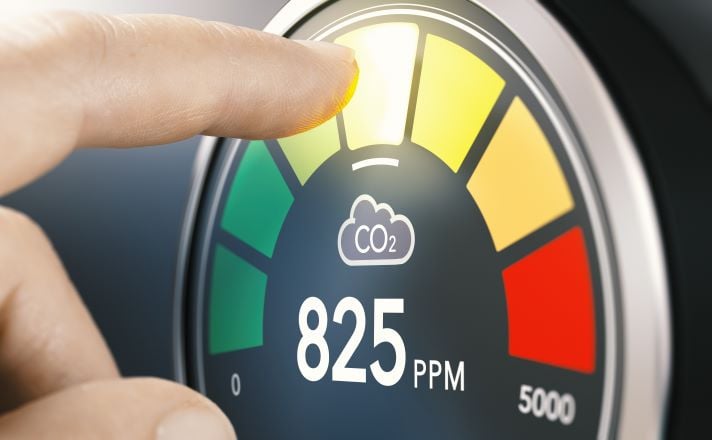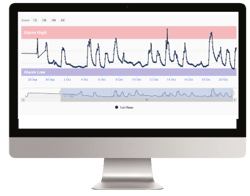
You may already know that monitoring CO2 levels in your premises can help you to improve air quality and therefore reduce the risk of viruses like COVID transmitting easily. Measuring CO2 will help you to identify just how much of an issue you have and what lengths you need to go to improve conditions.
There are of course different ways to measure CO2. One great way is using IOT sensor technology, though you can also use more standard cheaper CO2 monitors. So what’s the difference? And how does IOT technology help over and above normal standard monitors? Below we’ve outlined 8 reasons why IOT technology is a far better way of monitoring CO2.
1- Sensors are wireless and therefore quick and easy to install
IOT sensors have no cables making them really easy to install in the right place to get accurate readings. Simply peel back the adhesive tape and place on a wall at head height, away from windows, doors and air vents.
accurate readings. Simply peel back the adhesive tape and place on a wall at head height, away from windows, doors and air vents.
CO2 monitors on the other hand need power or regular charging, which makes them a lot harder to install in the right place unless you wire in a new electrical socket, which obviously takes longer and adds to the cost.
2- No need to manually collect CO2 readings
With an IOT Automated Solution, CO2 levels are automatically recorded across all rooms (where there are sensors) and presented centrally on a dashboard for you to review directly from your PC, Laptop and Smartphone.
With CO2 monitors the readings are presented only on the monitor screen itself. Which means you have to physically go to the monitor screen each time to take a reading. Collecting readings from different rooms will be very time consuming.
3- Data is accurate and reliable
With an IOT solution the readings are taken in set intervals throughout the day, 24/7. This is really helpful as CO2 levels change depending on how many people are in the  room and how much fresh air is coming in, which means you see the peaks and troughs. An IoT solution is accurate and reliable as it will record the data as conditions change.
room and how much fresh air is coming in, which means you see the peaks and troughs. An IoT solution is accurate and reliable as it will record the data as conditions change.
With CO2 monitors you never get a true picture because no one is going to take readings constantly throughout the day, so you’ll never really know the true peaks.
4- Much better oversight of air quality across rooms and your premises
With IOT you can see from your PC, Laptop and Smartphone how good (or bad) the air quality is across all rooms throughout your premises.
With CO2 Monitors you have no oversight at all.
5- Far easier to see if your changes to improve ventilation are working or not
For example, you may decide to keep windows ajar each day for one week and see how this improves air quality within your rooms.
this improves air quality within your rooms.
With an IoT solution it will be very easy to compare one weeks data with another, with very little effort.
With CO2 monitors you’ll need to collect data regularly each day, from each monitor on an ongoing basis. And potentially add the figures into a spreadsheet to create charts to make a comparison.
6 - Thresholds can be set to alert staff discreetly
With an IOT solution thresholds can be set to discreetly alert specific people when conditions have been breached. This early warning can help you to improve conditions e.g. open a window for 10mins.
CO2 monitors can also alarm when conditions are met. However, this alarm will disturb everyone in the room. If alarms are triggered regularly staff may disable it or decide it isn’t a safe environment to work in.
7- Share reliable data collected with staff and customers
You may want to improve air quality to make conditions safer and to encourage staff, visitors or both to return.
With an IoT solution you can easily generate reports to share the accurate and reliable data that has been automatically recorded.
With CO2 monitors – the readings are on the screen monitors. You have less control and they can be a distraction to staff and visitors.
8- Use less power and better for the environment
Our CO2 sensors uses very little power and only the gateway requires a power source. One gateway can also connect hundreds of sensors.
Each CO2 monitor requires power or needs charging regularly.
Summary
So there you have it. CO2 monitors may cost you less initially but requires more time, effort and therefore money to help you improve ventilation. Whereas, an Automated Monitoring Solution using CO2 Sensors may cost a little more upfront, provides you with CO2 readings automatically and makes it far easier to improve conditions for the safety and comfort of your staff and customers.
For further information or a demonstration of our Automated CO2 Monitoring Solution please get in touch.



